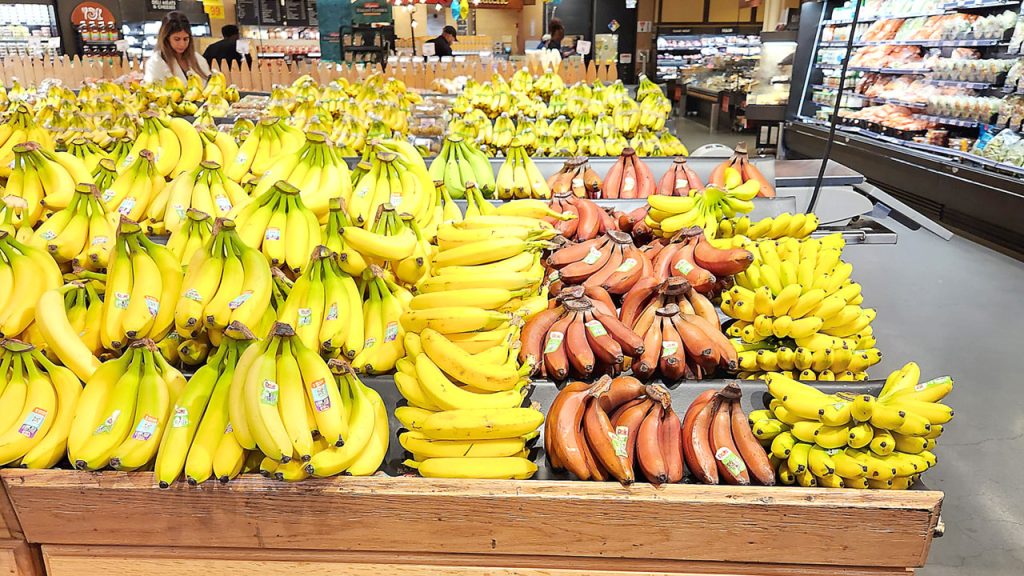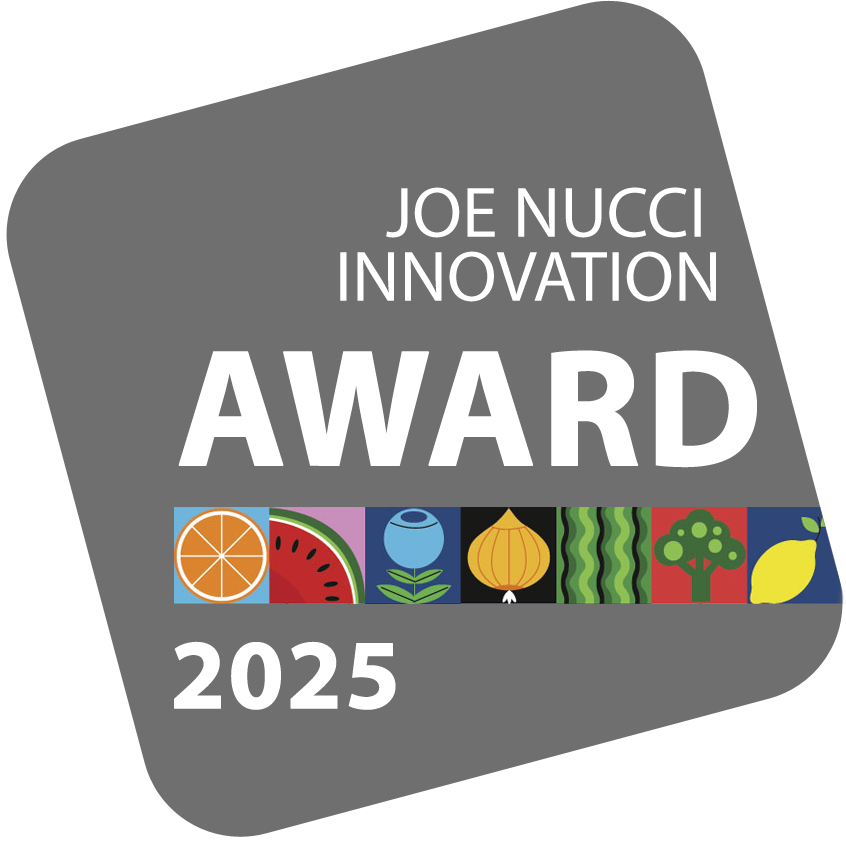Ripeness a Key Driver of Produce Sales
June 16, 2025 | 8 min to read

Ripening has become vital to meeting consumer demand.
“Ripening” or “pre-conditioning” is a key element to getting optimally ripe fruits to supermarket shelves. But that step often passes under the radar for the vast majority of shoppers. Much like a magician pulling back the curtain to reveal how a trick is performed, ripening is a process that is little known outside of industry circles.
Solutions range from pressurized ripening rooms, where ethylene is used to spark the ripening process, to simpler, temperature-controlled facilities for products that do not respond to ethylene.
Based in the Philadelphia Wholesale Produce Market in Philadelphia, PA, M. Levin has been offering on-site customized ripening programs for the past 119 years, ripening and distributing approximately 30,000 cases of bananas up and down the East Coast on a weekly basis.
“Banana ripening has come a long way,” says M. Levin controller Tracie Levin. “In the mid-1900s, we ripened in ripening rooms using tarps and keeping the rooms ‘watered.’ Nowadays, we ripen in pressurized ripening rooms, where we can control the rooms by our smartphones, from anywhere in the world.”
Headquartered in Fort Lauderdale, FL, Chiquita Fresh North America operates a network of advanced ripening centers.
According to the company’s fruit supply chain director, Marcio Urban, Chiquita uses advanced monitoring to ensure bananas ripen uniformly to meet the exact color stage retailers expect. Invariably, this stage tends to be ready-to-eat bananas, with most consumers valuing convenience and immediate consumption.
TECHNOLOGICAL INNOVATIONS
Urban says new ripening technologies are reshaping the industry by improving quality and sustainability. These include intelligent cooling containers for precise control of temperature and atmosphere during transport, ensuring bananas arrive fresh and with extended shelf life.
Low temperature ripening is also advancing, Urban adds, enabling the process to be slowed to allow more flexibility in distribution and reduce waste.
Based in Charlotte, NC, but with operations throughout Latin and North America, Dole Fresh Fruit offers ready-to-market banana ripening services at the Port of Wilmington, DE. According to Dole’s director of corporate communications, Bil Goldfield, the company’s biggest advantage lies in its decades of experience in ripening and post-harvest handling, helping ensure freshness and shelf life.
Goldfield says the move to forced-air ripening rooms has enhanced consistency, allowing for more precision in humidity and temperature, and reduced energy consumption. More recently, early-stage efforts to integrate AI into ripening systems could further streamline operations and minimize waste across the supply chain, he adds.
Ripening technology innovators include Catalytic Generators, a company that invented the ethylene generator for ripening bananas, avocados, mangos and other fruits.
Its solutions include the Easy-Ripe generator, which, when paired with Ethy-Gen II Ripening Concentrate, enables ripeners to efficiently and safely introduce ethylene into ripening rooms, according to Catalytic Generators’ President and Chief Executive Greg Akins.
“Our goal is simplicity: Pour a liter of Ethy-Gen II, set the ethylene conversion rate, and start the generator,” he says. “Within 24 hours, enough ethylene is applied to prompt fruit to produce its own, kicking off ripening.”
Similarly, Blythewood, SC-based Thermal Technologies, a designer and manufacturer of commercial produce ripening rooms, has debuted several recent innovations.
One of its best-received, according to vice president of sales, David J. Byrne, is the TarpLess ripening room smartphone application, which provides safe, fully functional operation and monitoring from a cell phone using secure VPN technology.
Byrne says the company’s RollSeal triple-layer, power-operated fabric doors have also proved popular, adding that Thermal Technologies will soon be introducing enhanced room monitoring, incorporating AI and sensor technology.
One Banana, a third-generation, family-owned business headquartered in Coral Gables, FL, with operations in the Netherlands and Guatemala, sources from sustainable farms in Guatemala, Ecuador and Peru. The company also recently opened a new ripening and distribution center in Wilmington, NC.
According to the company’s president, Rob Adams, the 19,800 square foot refrigerated facility will ripen not only bananas, but also avocados, mangos and pears.
WHAT CONSUMERS WANT
So, one side is the technology, but another is what consumers want when it comes to ripened fruit.
Adams believes most customers want quality and a consistent yellow color for bananas. “Better air flow means the fruit will ripen more evenly and to a better color.”
Headquartered in Santa Paula, CA, Calavo Growers operates four ripening locations for avocados and other products in the U.S. According to the company’s vice president of product management, Peter Shore, when it comes to avocados, consumers typically look for ripe fruit for consumption on the day of purchase or the next couple of days.
Shore adds, however, Calavo is working to spread the message that it’s OK to refrigerate avocados once ripe. “Ripe avocados can remain refrigerated for several days and hold the same ripe degree.”
Oxnard, CA-based Mission Produce supplies ripe avocados and mangos to retail, wholesale and foodservice in over 25 countries via a network of 14 ripening centers across the U.S., U.K., Europe and Asia.
Mission’s Stage 1-Stage 5 ripe programs for avocados and mangos are focused on meeting shopper demand and generating impulse purchases, according to senior vice president of sales, Brooke Becker. For foodservice, the company supplies stage 4 (“Firm-Ripe”) for slicing and dicing, or stage 5 (“Ripe”) for mashing and smashing, she says.
For retail in particular, Becker recommends displaying avocados at stage 3 or 4. “Shoppers consider ripeness the most important factor when making an avocado purchase, ahead of price, size, and country of origin.”
Shoppers consider ripeness the most important factor when making an avocado purchase, ahead of price, size, and country of origin.
— Brooke Becker, Mission Produce, Oxnard, CA
Ripeness is also a key driver in mangos, Becker says. “We’ve seen how ripening has reshaped the avocado category, and now we’re leveraging our expertise to drive the mango category forward. By bringing ripe mangos to the U.S. at scale, we firmly believe mangos are going mainstream.”
However, this is not to suggest all consumers are the same. According to Goldfield at Dole, consumer preferences vary widely, and geography plays a significant role. “In more urban markets, shoppers tend to gravitate toward ready-to-eat fruit for immediate consumption,” he says. “Conversely, rural consumers often prefer greener fruit that can ripen at home and have an extended shelf life.”
KEY FACTORS TO SUCCESS
Also based at the Philadelphia Wholesale Produce Market, John Vena Inc. (JVI) conditions avocados, mangos and plantains to meet customer color, pressure or Brix specifications. The company installed some of its first mobile ripening units during the second half of 2024, enabling it to increase its capacity, and ability to monitor ethylene, humidity, and CO2 within the units, according to Ripening Manager Joe Menei.

Knowing the variety you’re working with and consistent collaboration with your supplier are the key elements to a successful ripening program, Menei says. “The bloom of the tree, dry matter, and growing region can all impact how a piece of fruit ripens, and we must be adaptable to all these measures to accurately ripen fruit to our specs.”
Byrne from Thermal Technologies agrees. “The better you can forecast your needs, the less shrink you will experience.”
A successful ripening begins with harvesting bananas at the right stage of maturity in order to ripen evenly and develop the best flavor and texture, says Chiquita’s Urban. From there, maintaining precise control over temperature, humidity and airflow throughout the supply chain is essential.
Calico’s Shore says ripening fruit is a science where different oil content, time of season, and country of origin all play into the length of time, temperature and amount of ethylene required to ripen.
“Avocados give off heat as they ripen, and if temperatures are not controlled, fruit can easily reach temperatures over 80F, which can over ripen or damage fruit and make it unsaleable.”
For Akins at Catalytic Generators, knowing the fruit maturity and overall quality is key to effective ripening. “These are extremely important in determining the ripening schedule needed for the fruit,” he explains. “Stage of harvest certainly plays a major role; fruit needs to be physiologically mature before harvest. Immature fruit may ‘ripe’ and go through a color change, but best eating quality will never be attained if harvested too soon.”
STORE LEVEL TIPS
Coral Gables, FL-headquartered Fresh Del Monte utilizes energy-efficient pressurized ripening rooms to ripen avocados and bananas. According to Walter Tordoff, vice president of global quality assurance, these can ripen anywhere from 20 to 42 pallets of fruit at once, equating to roughly 38,400 pounds of bananas.
He believes ripening is an essential process for many products at retail. “We believe ripening is helpful and, in many cases, necessary, to ensure certain produce commodities are ready to eat when purchased by consumers.”
With this in mind, he suggests keeping produce storage and display areas at temperatures that maximize the longevity of the ripened fruit. It is also important, he adds, to be careful while handling produce to prevent scarring and bruising, as well as frequently rotating to keep the ripest fruit at the front of displays.
At a store level, Tracie Levin recommends bananas be kept in a warm environment and not in coolers. Storing bananas alongside oranges in produce coolers is a “major no-no” according to Levin, who says chilling the fruit turns it brown and unattractive for sales.
Goldfield at Dole strongly recommends employee training, arguing the maintenance of fruit quality at retail depends on proper handling, particularly with delicate and temperature-sensitive products like bananas. “Retail teams that are properly trained in handling protocols can greatly extend shelf life and enhance the shopper experience.”
To maintain banana quality and shelf life at the store level, proper handling and storage are essential, according to Mario Padilla, senior distribution manager at Chiquita Fresh. Padilla also recommends banana hangers for display to reduce bruising and mitigate pressure.
Shore at Calavo recommends using a riper stage during high-volume promotional periods or weekends. “Avocados can be an impulse buy. If consumers find the degree of ripeness they are looking for, they’re going to buy multiple pieces of fruit, not just one.”
16 of 17 article in Produce Business June 2025

